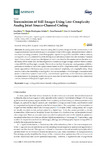Transmission of Still Images Using Low-Complexity Analog Joint Source-Channel Coding

Use this link to cite
http://hdl.handle.net/2183/23857Collections
- Investigación (FIC) [1685]
Metadata
Show full item recordTitle
Transmission of Still Images Using Low-Complexity Analog Joint Source-Channel CodingDate
2019-07-03Citation
BALSA, Jose, et al. Transmission of Still Images Using Low-Complexity Analog Joint Source-Channel Coding. Sensors, 2019, vol. 19, no 13, p. 2932.
Abstract
[Abstract] An analog joint source-channel coding (JSCC) system designed for the transmission of still images is proposed and its performance is compared to that of two digital alternatives which differ in the source encoding operation: Joint Photographic Experts Group (JPEG) and JPEG without entropy coding (JPEGw/oEC), respectively, both relying on an optimized channel encoder–modulator tandem. Apart from a visual comparison, the figures of merit considered in the assessment are the structural similarity (SSIM) index and the time required to transmit an image through additive white Gaussian noise (AWGN) and Rayleigh channels. This work shows that the proposed analog system exhibits a performance similar to that of the digital scheme based on JPEG compression with a noticeable better visual degradation to the human eye, a lower computational complexity, and a negligible delay. These results confirm the suitability of analog JSCC for the transmission of still images in scenarios with severe constraints on power consumption, computational capabilities, and for real-time applications. For these reasons the proposed system is a good candidate for surveillance systems, low-constrained devices, Internet of things (IoT) applications, etc.
Keywords
Image coding
Joint source-channel coding
Performance evaluation
Joint source-channel coding
Performance evaluation
Editor version
Rights
Atribución 3.0 España
ISSN
1424-8220






